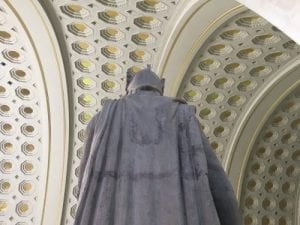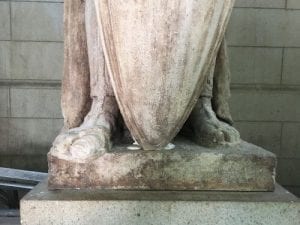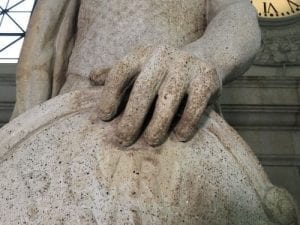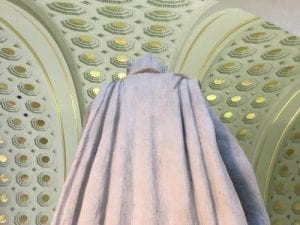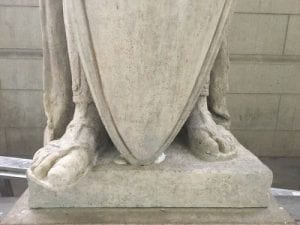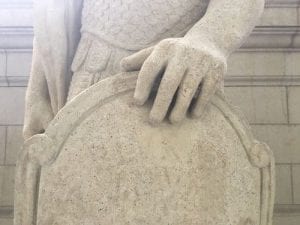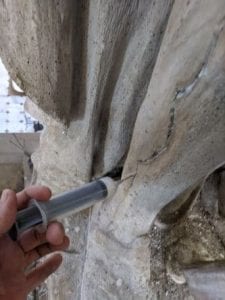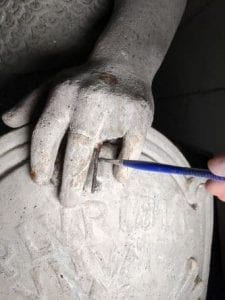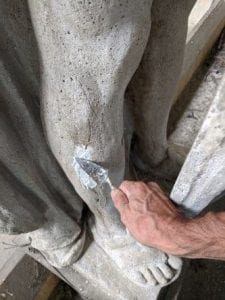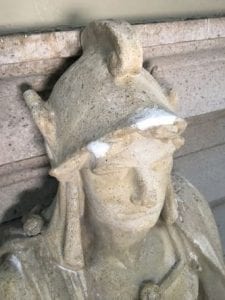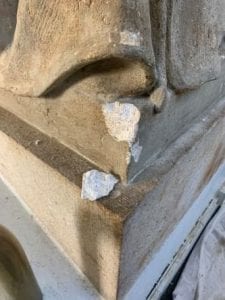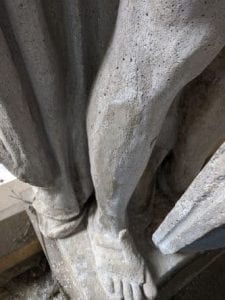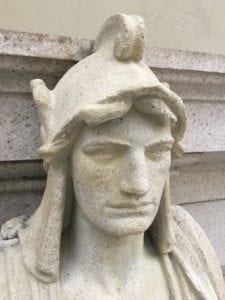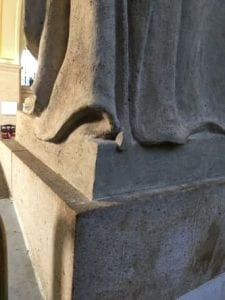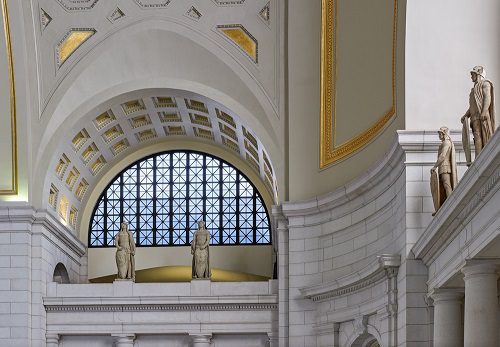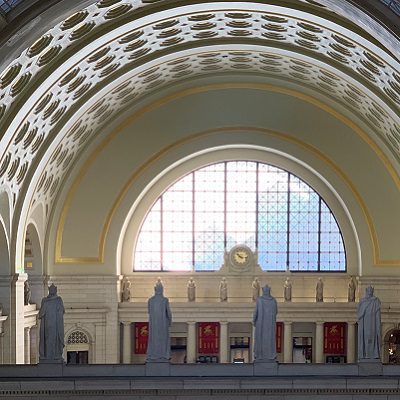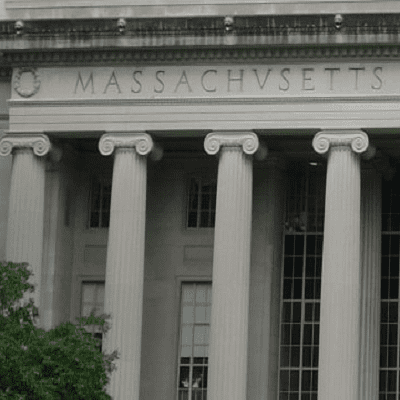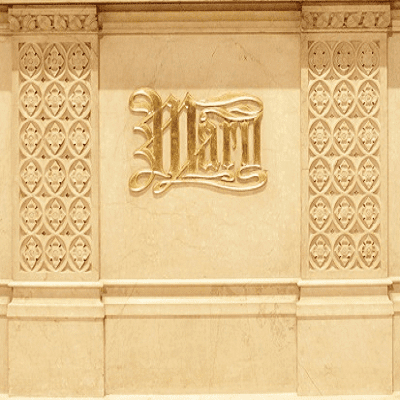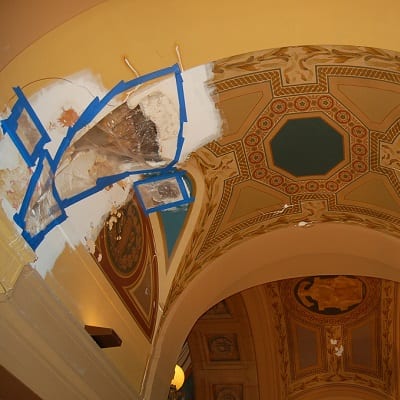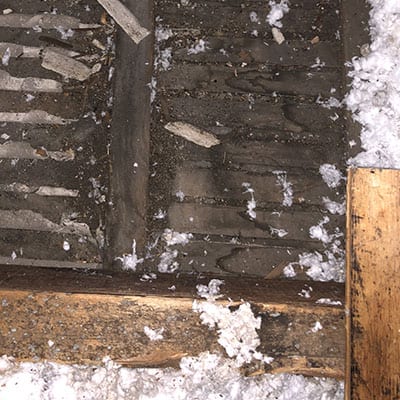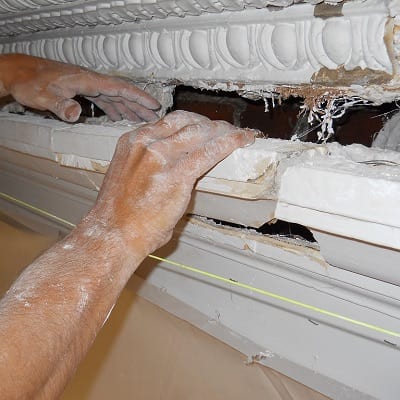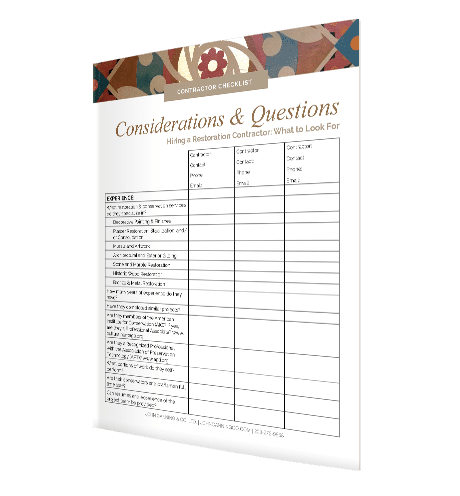This is the second part in a two-part series on the cleaning, repair, and restoration of the Legionnaire statues of Union Station in Washington, D.C. You can find Part One here.
As detailed in an earlier blog post, the restoration of the Legionnaire statues of Union Station began with a thorough and detailed analysis and documentation of their current condition. The information gathered in this process is critical to establishing a plan of action for the cleaning, repair, and restoration work to follow.
Cleaning the Statues
Once the current condition of each Legionnaire was thoroughly analyzed and documented, cleaning of the statues could take place. For all of the statues, this consisted of three separate actions:
- Dry brushing: This was performed to remove excess dirt, grime, and biological debris (i.e., pigeon guano) from the surface of each statue in order to prime the surface for further cleaning and repair.
- Mechanical intervention: Any foreign objects embedded within the surface of the statues were removed using a scalpel.
- Application of cleaning agent: A conservation cleaning agent was applied to the surface of each statue using a brush, in order to remove any ingrained dirt and grime that could not be removed through dry brushing alone.
Before the Cleaning
Below, you can see a number of images which detail the condition of the Legionnaire statues prior to being cleaned.
After the Cleaning
Below are those same images, after cleaning of the Legionnaires has been completed.
Repair and Restoration
With the surface cleaned, a post-cleaning assessment of each statue could then take place and be documented. In addition to the previously-noted damage, the post-cleaning assessment revealed a significant amount of staining to the finish. It also revealed evidence of previous intervention to the vast majority of the Legionnaires, which had been obscured prior to cleaning.
Repair work was conducted as deemed necessary for each Legionnaire on a case by case basis. That being said, each of the statues received the following typical repairs:
- Surface cleaning: Both dry brushing and cleansing, as discussed above.
- Infilling: Any cracks in the plaster or areas of abrasion were filled with material compatible with the original.
- Inpainting: Custom color paints were created and blended in order to match the existing finish.
In addition to these general repairs, a number of Legionnaire statues required additional repair work in order to correct their specific conditions. This included:
- Plaster repair: For abrasions and damage that was greater than ½-inch in size, a combination of materials was used. Additionally, at areas of loss, custom-made molds and moulding plaster were used to replicate sections as needed.
- Plaster consolidation: Which was used to strengthen weakened and decaying plaster as necessary.
- Application of isolation coating to wiring: For statues where wiring was exposed, the wiring was scraped free of rust and then an application of isolation coating was completed by brush.
- Reinforcement of shields: Where necessary, the point at which the shields attached to the Legionnaire body was reinforced with moulding plaster in order to stabilize the shield movement.
An example of the kind of plaster consolidation performed on the statues.(Left) The application of isolation coating to the wiring underlying the statues. (Right)
As Union Station is a highly-trafficked public space, one of the greatest challenges in completing the cleaning and restoration was in scheduling. Work had to be scheduled around events, often shifting between day and night shifts. Similarly, work needed to be cautious and aware of pedestrians and their path of travel, particularly when moving heavy equipment. As is necessary for any restoration project that take place in a public space, completing the project on time required our team to operate in a flexible, responsive manner.
Plaster Repair in Progress
Below are a series of images which show work in progress on one of the Legionnaire statues.
After the Plaster Repair
Below are a number of images which detail the kind of repairs typical of the Legionnaires.
Ongoing Maintenance
In order to keep the Legionnaire statues as close to their post-cleaning and repair condition as possible, our team recommended the following steps for ongoing maintenance. These recommendations can generally be considered for any plasterwork which is found in similarly exposed public spaces:
- Light brushing and vacuuming: Once a year, the surface of the Legionnaires should be lightly brushed and vacuumed in order to prevent the extreme accumulation of dust and grime.
- Monitoring of biological debris: Because pigeon guano and other biological debris and excrement can be corrosive and also weigh upon the statues, the buildup of this excrement should be monitored and removed by a professional approximately every five years.
- Monitoring after seismic activity: This is to ensure that all seams are intact and that shields remain stable and not at risk of falling.
- Installation of UV filters on windows: Because exposure to direct sunlight can cause damage to finishes, installation of UV filters can minimize that damage.
- Installation of plexiglass barriers: For Legionnaires at the mezzanine level, installation of three-sided plexiglass barriers at the backside of the statues can prevent additional damage to the finish.
Restored to their former grandeur, the Legionnaires will continue to watch over generations of those who travel through the station. The restoration of the Legionnaire statues of Union Station demonstrates the expertise and experience that John Canning & Co. is known for, and why our team was chosen to complete the task as well as chosen to continue to do additional work in the coming months. The upcoming restoration work includes work in six vestibules (3 north and 3 south) performing stone cleaning and repairs, metal cleaning and repairs, painting of transom panels and transom window frames, and restoration of 6 additional legionnaire.
If your historic structure or architectural project includes historic plaster, learn more about why a plaster conditions survey is so important and how it can help you prepare for plaster restoration and stabilization.

![Restoring the Legionnaire Statues of Union Station [Before & After]](https://johncanningco.com/wp-content/uploads/2020/01/Restoring-The-Legionnaire-Statues-min.jpg)
